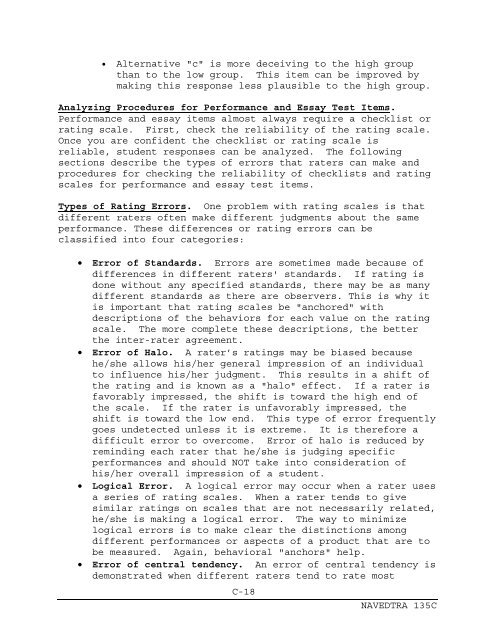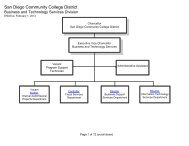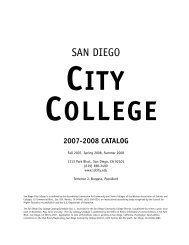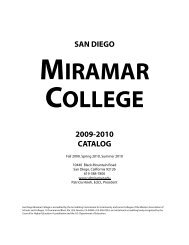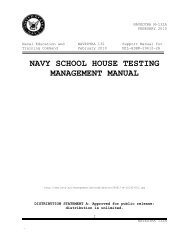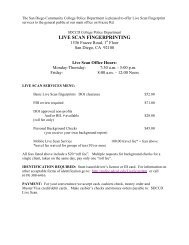NAVY SCHOOL MANAGEMENT MANUAL
NAVY SCHOOL MANAGEMENT MANUAL - AIM
NAVY SCHOOL MANAGEMENT MANUAL - AIM
- No tags were found...
Create successful ePaper yourself
Turn your PDF publications into a flip-book with our unique Google optimized e-Paper software.
Alternative "c" is more deceiving to the high group<br />
than to the low group. This item can be improved by<br />
making this response less plausible to the high group.<br />
Analyzing Procedures for Performance and Essay Test Items.<br />
Performance and essay items almost always require a checklist or<br />
rating scale. First, check the reliability of the rating scale.<br />
Once you are confident the checklist or rating scale is<br />
reliable, student responses can be analyzed. The following<br />
sections describe the types of errors that raters can make and<br />
procedures for checking the reliability of checklists and rating<br />
scales for performance and essay test items.<br />
Types of Rating Errors. One problem with rating scales is that<br />
different raters often make different judgments about the same<br />
performance. These differences or rating errors can be<br />
classified into four categories:<br />
<br />
<br />
<br />
<br />
Error of Standards. Errors are sometimes made because of<br />
differences in different raters' standards. If rating is<br />
done without any specified standards, there may be as many<br />
different standards as there are observers. This is why it<br />
is important that rating scales be "anchored" with<br />
descriptions of the behaviors for each value on the rating<br />
scale. The more complete these descriptions, the better<br />
the inter-rater agreement.<br />
Error of Halo. A rater’s ratings may be biased because<br />
he/she allows his/her general impression of an individual<br />
to influence his/her judgment. This results in a shift of<br />
the rating and is known as a "halo" effect. If a rater is<br />
favorably impressed, the shift is toward the high end of<br />
the scale. If the rater is unfavorably impressed, the<br />
shift is toward the low end. This type of error frequently<br />
goes undetected unless it is extreme. It is therefore a<br />
difficult error to overcome. Error of halo is reduced by<br />
reminding each rater that he/she is judging specific<br />
performances and should NOT take into consideration of<br />
his/her overall impression of a student.<br />
Logical Error. A logical error may occur when a rater uses<br />
a series of rating scales. When a rater tends to give<br />
similar ratings on scales that are not necessarily related,<br />
he/she is making a logical error. The way to minimize<br />
logical errors is to make clear the distinctions among<br />
different performances or aspects of a product that are to<br />
be measured. Again, behavioral "anchors" help.<br />
Error of central tendency. An error of central tendency is<br />
demonstrated when different raters tend to rate most<br />
C-18<br />
NAVEDTRA 135C


